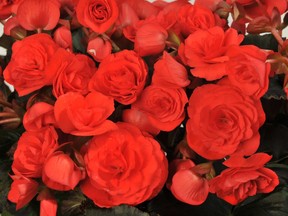From timing to potting and lighting — there’s plenty to consider

Reviews and recommendations are unbiased and products are independently selected. Postmedia may earn an affiliate commission from purchases made through links on this page.
Article content
Q. Last autumn I removed my begonia tubers from their hanging baskets and stored them in a frost-free place for the winter. I’d not grown these flowers before last year and I’m wondering when and how I should start them back into growth.
Advertisement 2
Article content
A. I usually bring the tubers out of storage in early March. That’s almost always when the first tiny nubs of pink growth begin to appear at the tubers’ upper surfaces. I’d check your tubers now, and consider bringing them into the house to begin regrowing.
Article content
I store my begonia tubers lightly covered in coarse vermiculite or a very light-textured potting mix. When I bring them out of storage, I usually uncover the tubers but keep them nestled into the vermiculite and spray-misted until I see pink nubs of potential growth clearly developing at the tops of all the tubers. Moderate warmth is helpful at this stage, to initiate root growth.
Once the nubs begin sprouting into leaf growth, I pot the tubers, covering the tops only barely, and place the pots in bright indirect light (or under plant lights) in cool room temperatures for stocky growth.
Advertisement 3
Article content
Q. The leeks I seeded indoors last month have produced seedlings now developing under a grow light. The tall ones are flopping over.
A. Floppiness in seedlings can be caused by a soil or seeding mix that was not pressed down firmly enough before seeding, or to heat, overwatering, or too much nitrogen. Inadequate light is another common cause of floppy seedlings, but that’s not an issue under grow lights.
The first thing I would do with your leek seedlings is to snip away the floppy tips, which often carry germinated seed cases that can weigh the seedlings down. Then, either thin or transplant them to give each one adequate room to develop.
Wait until late this month or in early April, when weather and soil conditions are reasonable, to transplant outdoors.
Recommended from Editorial
Article content





